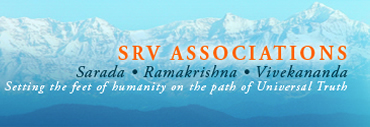Student Notebook
Article Index
Teachings on Siva Siva is looked upon in terms of indeterminate (Niskala, beyond time), and determinate (Sakala, with time). Both are hard to understand because Niskala is formless and Sakala is so vast.
Siva is looked upon in terms of indeterminate (Niskala, beyond time), and determinate (Sakala, with time). Both are hard to understand because Niskala is formless and Sakala is so vast.
For greater comprehension, then, Siva becomes a "family man." He can be viewed not only in terms of the monastic aspect, or as the great renunciate seated in Samadhi at the top of Mt. Kailash, but also as Kula, a prime member of the family tradition. In this regard, and to bring enlightenment to the dharmic masses, Siva grants the sadhana scriptures that speak in terms of teachings on the Word/japa, dhyan, bhava, and Brahma sadhana (storming the gates), and other clarifications.
Siva has five functions:
1. Sristi - projection of the worlds
2. Stithi - preservation of the worlds
3. Samhara - dissolution of the worlds
4. Tirodhana - Self-limitation [worlds, objects, and beings are like masks Siva puts on]
5. Anugraha - Grace, expression
Siva has four padas, or works:
1. Jnana - providing philosophical systems
2. Kriya - encouraging people to carry sadhana into practice in terms of the philosophy
3. Yoga - spiritual practices/disciplines
4. Charya - spreading the teachings
Aham ("I") includes everything from the gross ego to Brahman. It is a name for Siva. It is called Purnahanta, the nondual "I" in fullness, in Its unbounded freedom. And what am I as Siva? Aham is to be meditated upon thusly in its three matras:
"A" is Para-akasha, the supreme space of Pure Being
"HA" is Svatantriya, inherent freedom
"M" is the Bindu, the point of first emanation
Ground everything in nonseparation in order to ensure freedom to explore Shakti's manifestations. The Secret of Creation is nonseparation.
While one is under the spell of maya, one considers the dualities to be real. But vivekajnan, discriminative knowledge, enables one to distinguish between Chit and achit, what is Sentient and what is insentient. Development of this ends the rounds of birth and death in ignorance.

